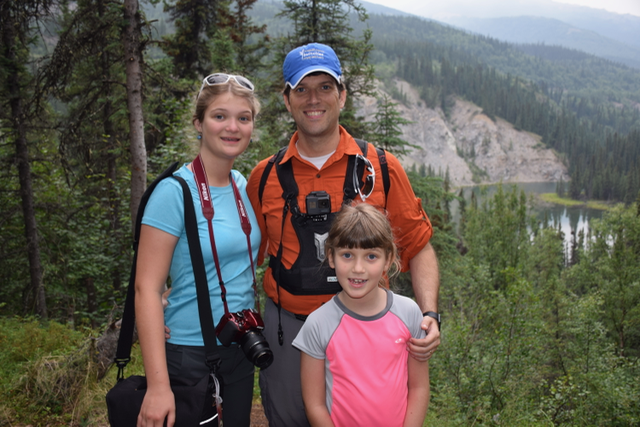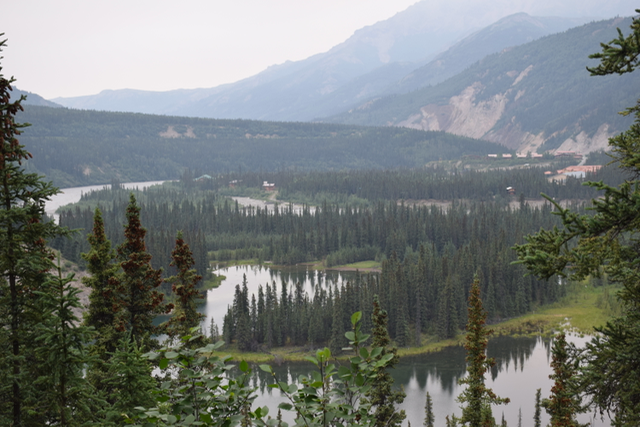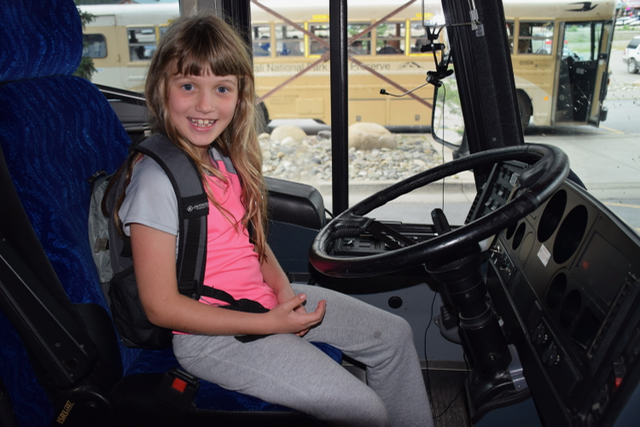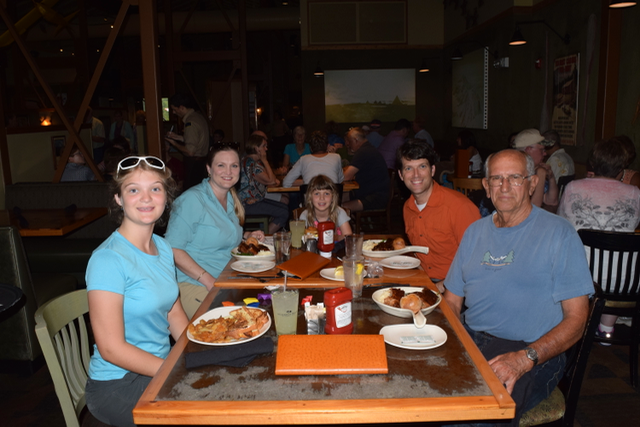The first half of today was free time while we waited for the coach to Mt. McKinley Princess Wilderness Lodge at 1:45pm. After eating breakfast at Sourdough Breakfast Buffet, we took the shuttle over to the Denali National Park Visitor Center. Our driver Bruce explained to us how to tell the difference between black and white spruce trees, which are prevalent in the park. The black have cones in the top and white have no cones. This stuck out to me, because Kate and Sara had been wondering how to tell the difference the day before.

From the Visitor Center we took another shuttle over to the dog kennel, and got to pet some of the sled dogs and watch a 30-minute presentation and demonstration. For the demonstration we got to see five of the 27 dogs pull a sled around a track in the kennel.

During the presentation we learned that the Denali National Park is the only National Park to employ sled dogs. They are Alaskan Huskies, and are specifically bred for strength instead of speed. They are larger and have thicker coats than racing huskies. Because of this thick coat, they prefer temperatures to be 30º or less.

In 1921, the park was only four years old and there was a lot of illegal hunting in Denali. Harry Karstens, the first park superintendent, employed sled dogs to help patrol the park and prevent this poaching. They have been used ever since, except during World War II. During the war they were used by the military. The park tried to replace them with heavy machinery but eventually went back to using sled dogs after the war was over. They are no longer used for patrol but instead work to help with science experiments and park cleanup.
In 1980 the park was expanded to six million acres and the name was changed to to Denali National Park. The original two million acres became federally protected wilderness, and the rule for this type of area is “minimum tool necessary to get the job done.” This is a big reason why they still use dogs today instead of machinery. Also, dogs are easier to start in extreme cold temperatures than heavy machinery.

They will continue to work until they are 8 or 9 years old. At that time they are adopted out, and the adoption process sounded pretty rigorous. The adopting family must demonstrated that they are committed to spending a lot of time outdoors and must live in a northern climate.
During the summers, each dog has three volunteer walkers that commit to walking them three hours per week. In addition to this they have an active area in the kennel where they can run and play.
During the winter, they can be out in the park from four days to four weeks at a time, and will run an average of 1,500 miles. They will burn 10,000 calories a day in the winter.

After the dog show, we got to spend a little more time with the dogs before heading back to the Visitor Center. From there Papa took the bus back to the Denali Princess Wilderness Lodge, while we took Kate and Sara to the Visitor Center where they completed the “Junior Park Ranger” program to get a certificate and badge. This is the second National Park where they have become Junior Park Rangers.

We then headed out onto the trails for an almost 2-mile hike on the Horseshoe Lake Trail. This was a short hike, but was fairly challenging due to sections of 20% grade.

The payoff was fantastic, which incredible views of Horseshoe Lake, which included a close-up view of a beaver dam. I wish we could spend several days hiking in Denali National Park!

After exiting the trails, we caught the shuttle bus back to the lodge and then grabbed a quick bite to eat at River Run Espresso. This included cinnamon roles that we had been smelling for two days. They were so good.

Around 1:45pm, we boarded a coach for the Mt. McKinley Princess Wilderness Lodge. Our bus driver was named Sydney, and he let Sara sit in the driver’s seat and make the safety announcement. She got a BIG kick out of this, and I think most of the grown-ups did too.
Sydney was originally from Baton Rouge, and first came to Alaska in 1967. He told us a lot about his life and how he fell in love with Alaska. He even led us in singing “America the Beautiful.” As expected, much of the route was stunningly beautiful, especially the Alaskan Mountain Range, which was on the right side of our bus for much of the ride.

There was a lot of haze today over the mountains, and Sydney explained that this was due to forest fires in the Yukon, which is 100s of miles to the west. There were also a lot of bumps in the roads, and he told us that this was mostly due to the roads being built on sections of permafrost. The asphalt heats in the summer and melts the permafrost, which can cause the road to buckle. Multiple sections have to be replaced every year.
We arrived at the Mt. McKinley Princess Lodge, with absolutely no view of Mt. Denali, even though it is over 30 miles closer to the mountain than where we had been in Denali National Park the day before. This was to be expected as the mountain is only visible 30% of the time. The lodge is actually located within the boundary of the park. With the expansion in 1980, several hotels were grandfathered in, and allowed to remain in place.

Olivia, Kate, Sara, and I took some time to explore the trails around the lodge, as well as walk back down the lodge road to get a great view of the Chulitna River. There was a lot of elevation change on this hike / walk, and we completed about three miles.

For dinner, we met Papa at the 20,320 Alaska Grill. All of the adults ordered ribs, and this was my favorite meal so far.

After dinner we went to the fire pits and roasted marshmallows to make smores, and they really hit the spot!

Tomorrow we are planning on taking a shuttle to the town of Talkeenta for a quick visit, and then will be boarding a train for Anchorage.
